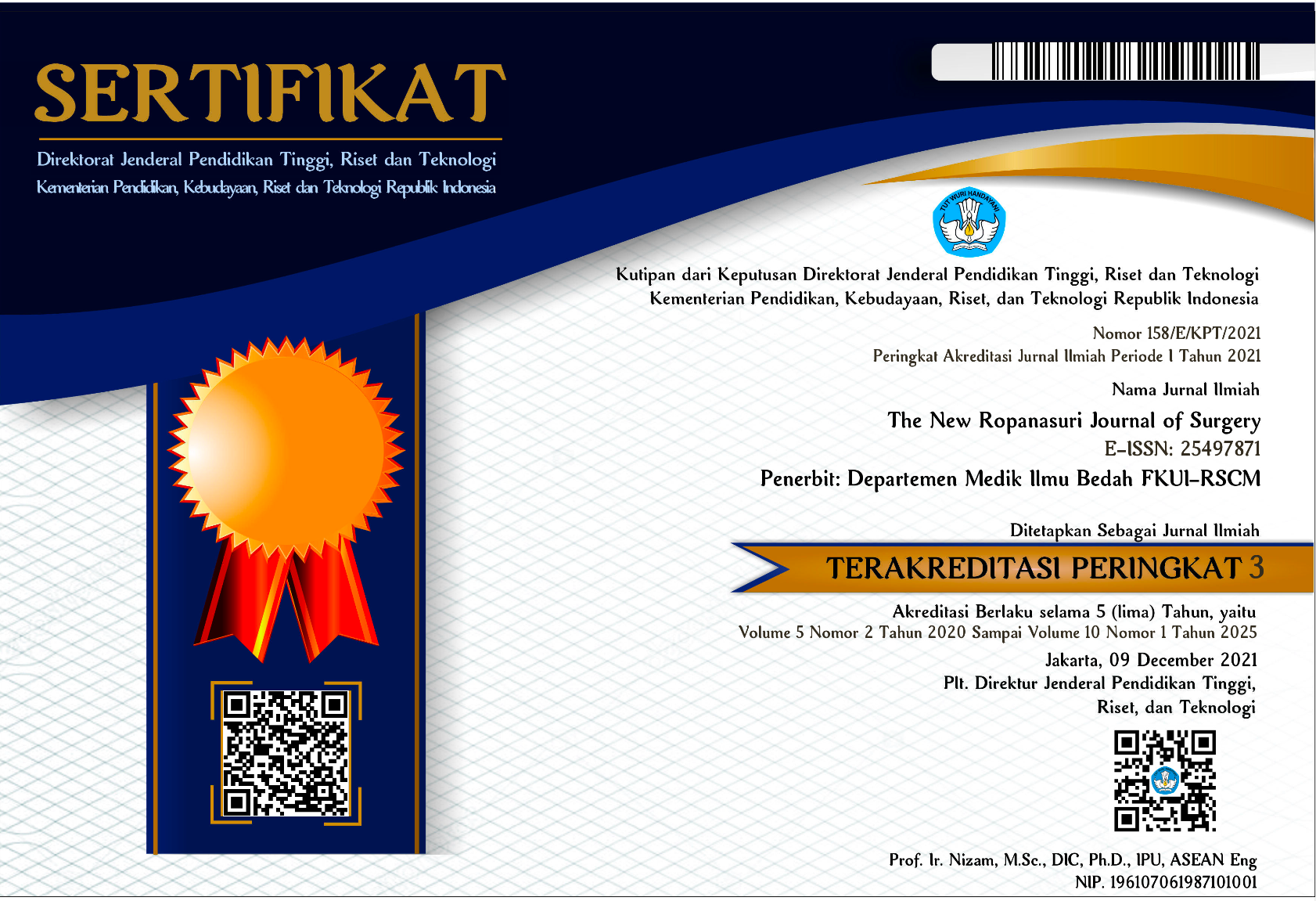Abstract
Introduction. Surgical repositioning of biliary drainage to the intestine (jejunum) through an artificial fistula (portoenterostomy) following surgical removal of extrahepatic residual biliary duct in biliary atresia, which is first proposed by Kasai has never been evaluated in our center. Thus, we run a study aimed to find out the successrate. Method. We run a cohort study retrospectively enrolled subjects with biliary atresia consecutively. A review of histopathology was carried out, and focused on degree of fibrosis as well as cirrhosis. Obtained data were subjected to statistical analysis using Fischer test and logistic regression. Results. Out of 15 subjects enrolled in the study, we found successmanagement in five subjects based on three months of icteric free period. Using Fischer test, we found a significant correlation (p = 0.04) between degree of fibrosis and outcomes in 1-year period with relative risk of 4 (CI 95% 1.5–10.65). Conclusion. Affecting factors in successrate of portoenterostomy remains unclear; degree of fibrosis might be the one. Different center reports different outcome as the histopathology characteristics varies in different center.
Recommended Citation
Sastiono, Sastiono; Maheranny, Marethania; and Oswari, Hanifah
(2016)
"Factors Affecting the Success Rate of Kasai Portoenterostomy,"
The New Ropanasuri Journal of Surgery: Vol. 1:
No.
1, Article 8.
DOI: 10.7454/nrjs.v1i1.8
Available at:
https://scholarhub.ui.ac.id/nrjs/vol1/iss1/8













